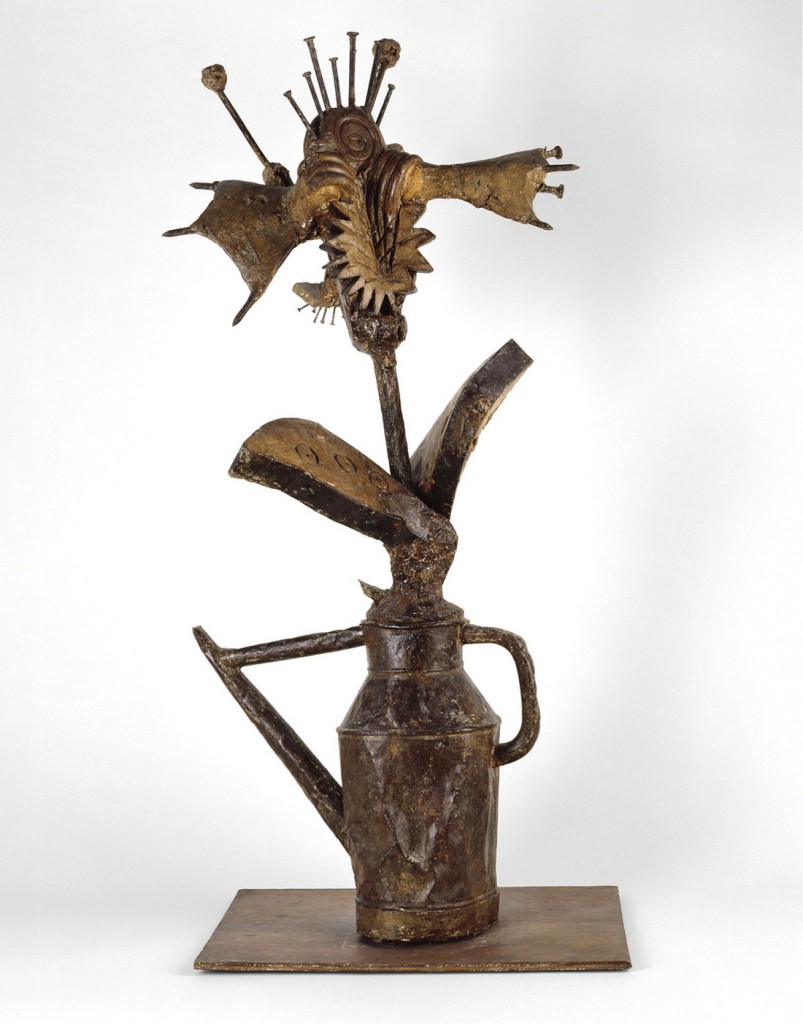
With several hours to spare before flying back to Nashville during a recent trip to New York (where I was lucky enough to attend an alumni event hosted by the Owen Graduate School of Management), I called a friend and headed to the Picasso sculpture exhibit at the Museum of Modern Art. Like most casual museum-goers, I’m more or less familiar with the Spanish master’s greatest hits, knowing enough to mutter the phrase “cubism” every now and then. But seeing Picasso’s sculptures was an entirely new experience.
Perhaps because they were never meant to be viewed by the public, the often rough, three-dimensional versions of his works offered (to me, at least) a remarkable view into Picasso’s trajectory of artistic growth.
His first 1902 unfired clay sculpture, Seated Woman, shows a strong element of experimentation and informality, almost something to keep his hands busy. From there you start to see how Picasso drew on the art of sculpting—using any available materials, including old canvas stretchers and his kids’ castoff toys—to help shape his most iconic painted figures. By the end of the exhibit, which features a series of sheet-metal sculptures Picasso made in the 1950s and ’60s, it’s clear that he infused these works with every bit of the elegant complexity that defines his most well-known pieces.
Perhaps most fascinating was seeing how Picasso continually pushed against prevailing artistic conventions, even his own previous work, to forge new creative paths that somehow remained unmistakably his own. That same idea of building upon the past to push further into the future runs deeply through this issue of Vanderbilt Magazine.
Matthew Baker, MFA’12, a graduate of Vanderbilt’s creative writing master’s program, ruminates about how the school is drawing upon its rich literary tradition to cultivate a new wave of talent. Rather than replicate the Hunger Games model used for many graduate writing programs, Vanderbilt has taken a different tack: to foster a tight-knit community that lifts each other up rather than encouraging classmates to tear one another down. To back up its commitment to a level playing field, Vanderbilt pays full tuition for each student who earns one of the handful of highly coveted slots in the program. It’s a bold move that has attracted an array of brilliant student writers and faculty members who are already putting Vanderbilt back on the world’s literary map.
In a similar vein, Vanderbilt Law School is taking innovative steps to adjust to a vastly altered legal profession in the wake of the 2008 financial crisis. Chris Jaeger, JD’09, explores how corporate spending and technological advances have eviscerated traditional business models at most law firms—and how VLS administrators and alumni are developing novel programs to ensure that new graduates thrive in this quickly changing landscape.
Finally, I had the opportunity to write about a new campus land-use plan, launched in the fall by Chancellor Nicholas S. Zeppos. As Kevin Murphy, Andrew W. Mellon Chair in the Humanities, reminded participants at a campus land-use symposium last October, universities have always served as vanguards of historical preservation. At the same time they play a critical role in pushing the edges of design, whether stylistically or technologically—and often both. Out of these seemingly contradictory notions comes a kind of architectural dialogue that transforms campuses such as Vanderbilt’s into enduring landmarks.
Maybe that’s a little of what Picasso had in mind as well.
—RYAN UNDERWOOD, BA’96, EDITOR
ryan.underwood@vanderbilt.edu
@runderwood